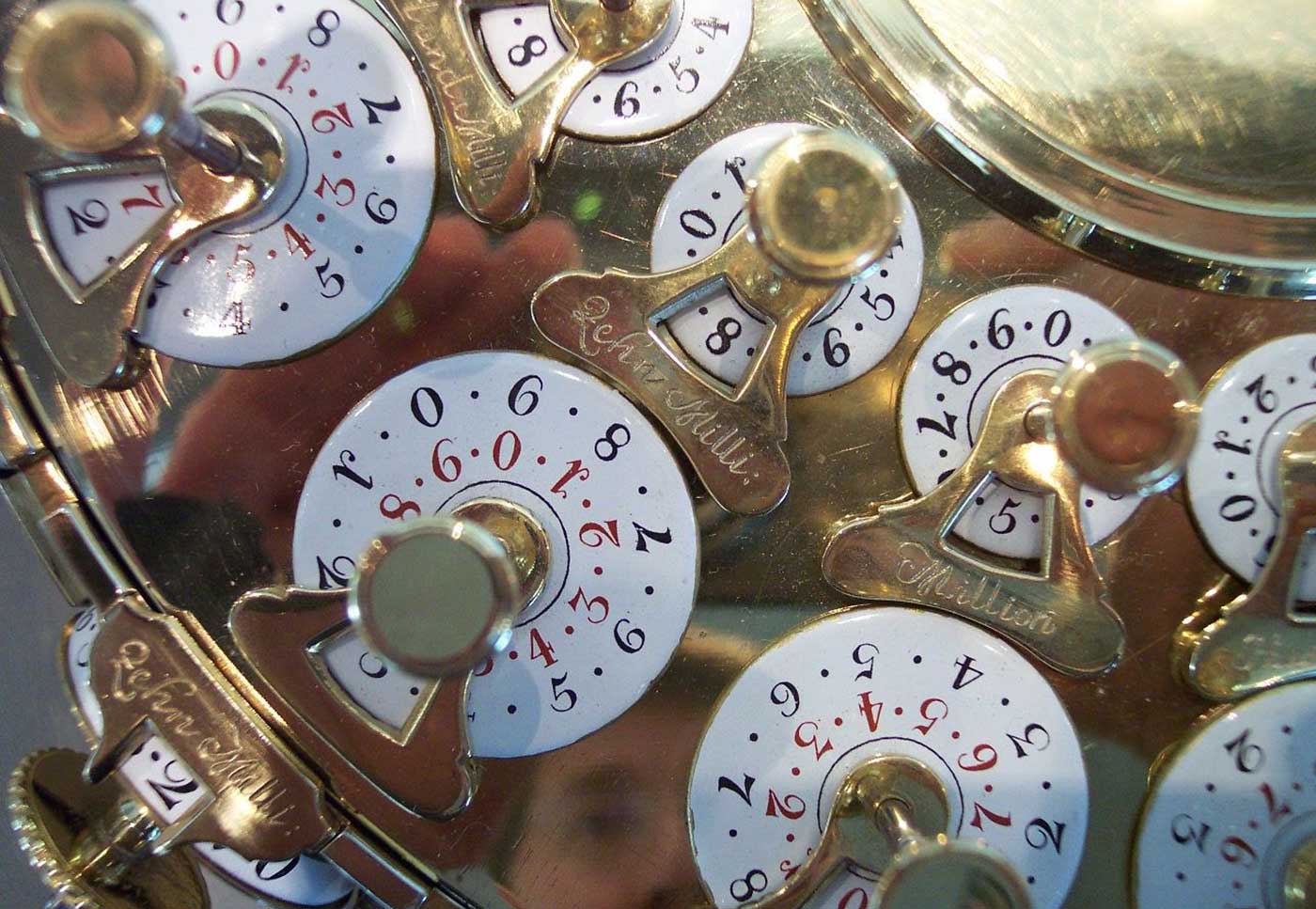The IoT is IT in progress
Internet of Things implementation requires calculation and small steps.
 Detail of a replica of an 18th-century calculating machine, designed and built in by the German Johann Helfrich Müller. (source: Nick Stahlkocher on Wikimedia Commons)
Detail of a replica of an 18th-century calculating machine, designed and built in by the German Johann Helfrich Müller. (source: Nick Stahlkocher on Wikimedia Commons)
The Internet of Things often is defined by orders of magnitude: billions of devices connected, trillions in generated revenue, zettabytes of multi-directional data. Naturally, the concept of such expansion is exciting. Today’s companies, however, are faced with a challenge of immediate impact: what to do next? What are the actionable IoT steps that make sense today?
For a start, it’s helpful to see the IoT as a process rather than a universe of untapped potential. Machines have been talking to machines for more than 20 years. IoT capabilities do represent a huge technological jump in the abilities of machines to talk to us and to each other. But these changes are part of a continuum on which most companies already are traveling.
The practical, gradual approach to the IoT may seem counterintuitive, but it is precisely what is needed, considering the expense and long-term implications of the technology shift. At the present stage of development, each IoT advance may require adjustments to your current IT model and protocols. These are as important to consider as any expected benefits.
The IoT probably will not be kind to companies that do not adapt. But it also can punish those that rush in without a clear strategy.
Start by examining the existing IT stack
A common misperception is that an IoT migration means swapping out an existing IT structure for an entirely new, foreign configuration. Although some IT departments may indeed build IoT platforms that stand alone from the existing stack, many more will expand and adapt what already is in use.
All enterprises can benefit from compartmentalizing IoT benefits. This also might seem counterintuitive, since the IoT often is described as a holistic advance that unites people, things, and functions in new ways. Its capabilities can—and ultimately will—deliver on their promise regarding data, connectivity, user interface, security, and many more subsidiary elements of existing IT, but that doesn’t mean a comprehensive approach makes sense today.
Instead, companies should consider which aspect of their IT function is most in need of a lift from the outset. This will vary tremendously industry to industry. Enterprises that deploy mobile work forces (such as energy providers, police, and safety departments) may well value an initial focus on middleware that improves on an existing messaging system. Retailers may find the IoT entry point with improved RFID or NFC capability that improves customer experience and smooths out transactional software.
Rather than looking for the solution that links and improves everything, the high-impact solution often will focus on one aspect of the IT stack:
- The things and people to be connected.
- The transport method: the network specifics and the software that holds them together.
- Data: where it is stored, where it can be accessed, and potential bottlenecks.
- API: the critical groundwork for IoT solutions heavily reliant on applications.
- Customer-facing applications.
Challenges: The flip side of every IoT coin
Whether a company defines its opening IoT play in terms of more data, more reliable internal connectivity, or more dynamic interplay with the customer base, the decision is guaranteed to import serious challenges. A distributed architecture may promise scalability, but is the underlying security apparatus also ready to expand? Multiple storage facilities can decrease bottlenecks, but will the data aggregation systems in place prioritize data, and keep an enterprise from drowning in redundant or low-value streams?
A successful IoT migration will consider the potential downside and future-proof trouble-shooting schematics. The challenges will be just as specific to the enterprise as the benefits, but there are general guidelines:
- Obsolescence. Some network components may never be secure in an IoT climate; others will be unable to control the expected increase in data traffic. When new components or systems are being considered, the solution’s ability to do more and replace what must go are critical.
- Data solution: up to the task? We still are in the early stages of harnessing the influx of IoT data. Not only must it be stored, it must be integrated throughout IT systems to maximize its benefit. Is the network infrastructure in place for such integration?
- Security: IoT’s common coinage. A quantum jump in sensors and networks will be accompanied by a jump in breach points. How can mobile workers utilizing a WAN or LAN network to be trained to observe new security protocols? Is a distributed architecture’s convenience worth the expense and disruption created by new encryption software?
Proceed? Yes, with caution
Decision-makers must understand the implications of IoT even while judiciously choosing first steps. A test site or the initial adoption of a single virtual network component can help companies adapt to IoT functionality and evaluate its benefits.
But a readiness to build on IoT successes and take them company-wide at the right moment also is critical. No one can yet know how or how quickly virtual networks will change our business models. Smart enterprises will walk into the IoT future while they can—but be poised to sprint when conditions demand it.
This post is a collaboration between O’Reilly and ThingWorx. See our statement of editorial independence.
